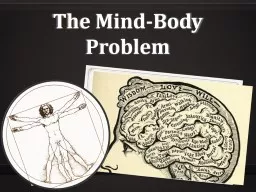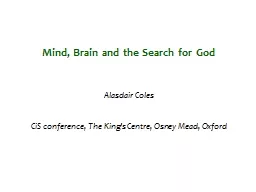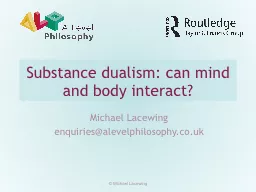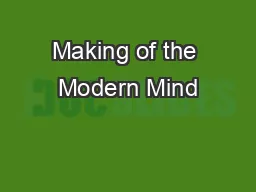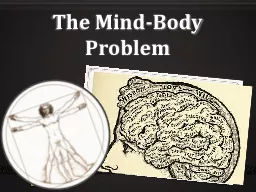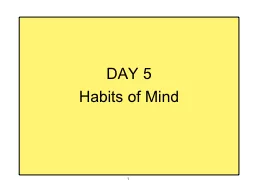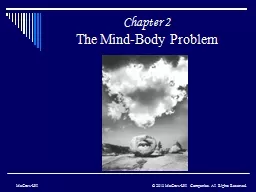PPT-The Mind-Body Problem N ormal day-to-day activities seem at first very ordinary
Author : danika-pritchard | Published Date : 2019-11-02
The MindBody Problem N ormal daytoday activities seem at first very ordinary You are reading a book and eating an apple You dont need to read aloudyou read in your
Presentation Embed Code
Download Presentation
Download Presentation The PPT/PDF document "The Mind-Body Problem N ormal day-to-da..." is the property of its rightful owner. Permission is granted to download and print the materials on this website for personal, non-commercial use only, and to display it on your personal computer provided you do not modify the materials and that you retain all copyright notices contained in the materials. By downloading content from our website, you accept the terms of this agreement.
The Mind-Body Problem N ormal day-to-day activities seem at first very ordinary: Transcript
Download Rules Of Document
"The Mind-Body Problem N ormal day-to-day activities seem at first very ordinary"The content belongs to its owner. You may download and print it for personal use, without modification, and keep all copyright notices. By downloading, you agree to these terms.
Related Documents

